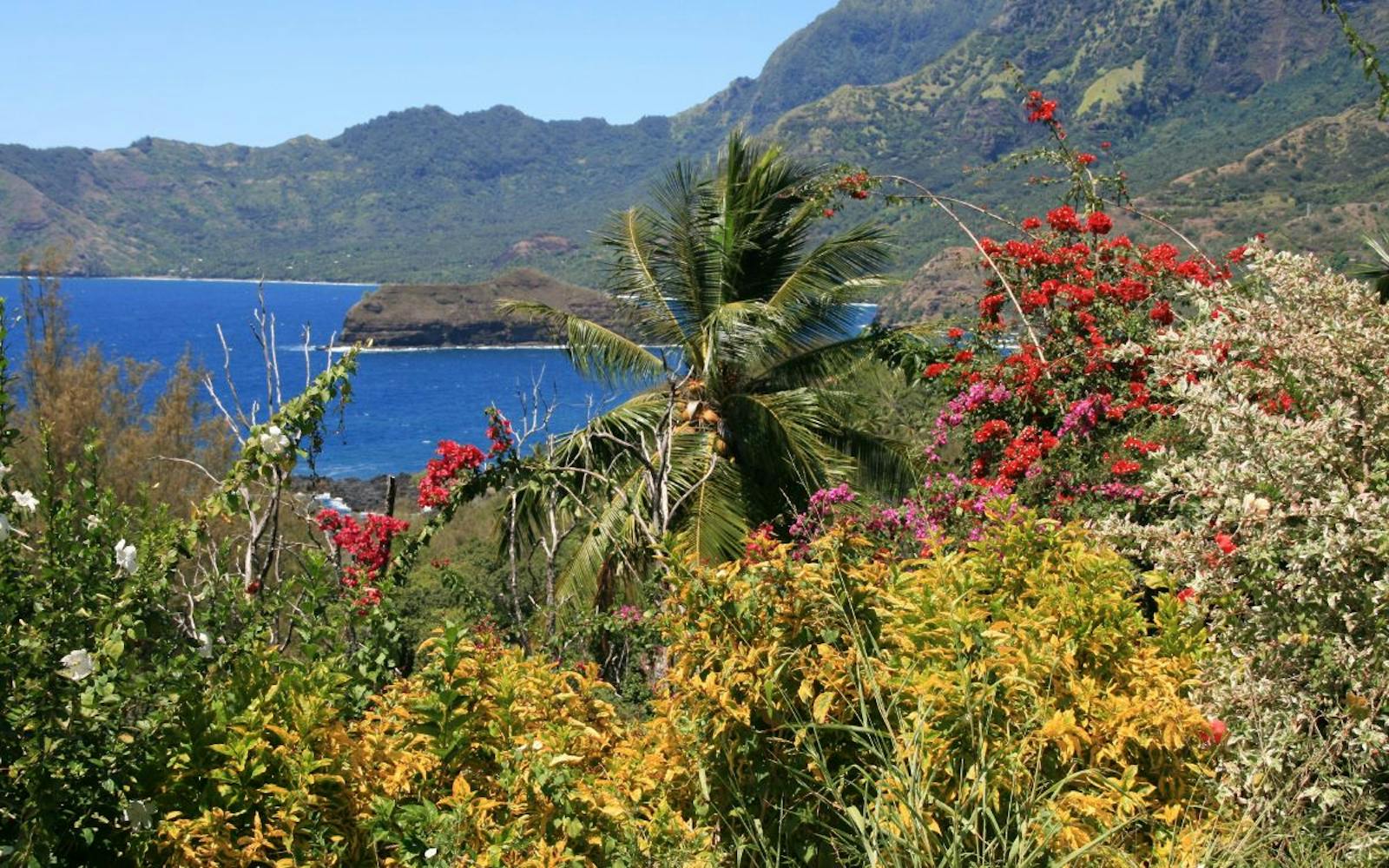Marquesas Tropical Moist Forests
The ecoregion’s land area is provided in units of 1,000 hectares. The conservation target is the Global Safety Net (GSN1) area for the given ecoregion. The protection level indicates the percentage of the GSN goal that is currently protected on a scale of 0-10. N/A means data is not available at this time.
Bioregion: Marquesas Tropical Islands (OC2)
Realm: Oceania
Ecoregion Size (1000 ha):
108
Ecoregion ID:
625
Conservation Target:
83%
Protection Level:
0
States: French Polynesia
The 12 Marquesas Islands are volcanic high islands with very rugged topography, knife-edged ridges, deeply dissected gorges, and cliffs plunging from mountaintops steeply to sea level. The razor-like peaks of the Marquesas Islands are home to brilliant ultramarine lorikeets and the huge Nukuhiva pigeon. The archipelago is extremely isolated, similar to its distant neighbor, Hawai’i. Few plants and animals were able to colonize over vast stretches of ocean, but the ones that did evolved over time into many unique species.
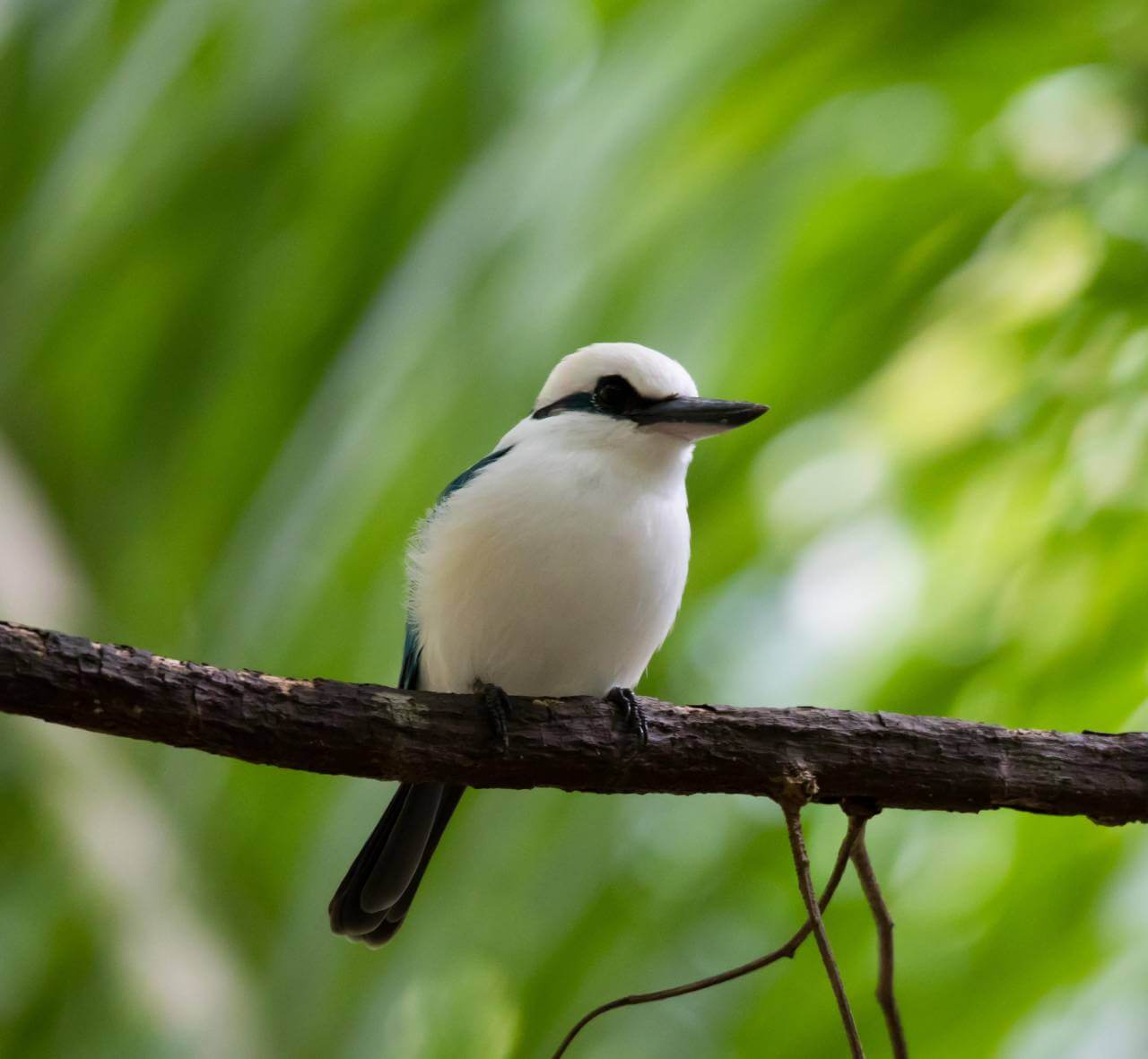
The flagship species of the Marquesas Tropical Moist Forests ecoregion is the Marquesan kingfisher.
Lowland forest of the Marquesas is dominated by the trees Pisonia grandis, Thespesia populnea, Calophyllum inophyllum, and Terminalia glabrata. A drier tropical forest once covered lower slopes on several islands, such as Eiao and Fau Huku, with species from the genera Hibiscus, Pandanus, Thespesia, and Cordia. Montane forest hosts Hibiscus tiliaceus, Pandanus tectorius, Alphitonia marquesensis, and Weinmannia parviflora. Stunted cloud forest at the top of the mountains and high ridges support Cheirodendron bastardianum, Ilex anomala, and Freycinetia spp. Wind-swept heathlands occur on some of the highest peaks.
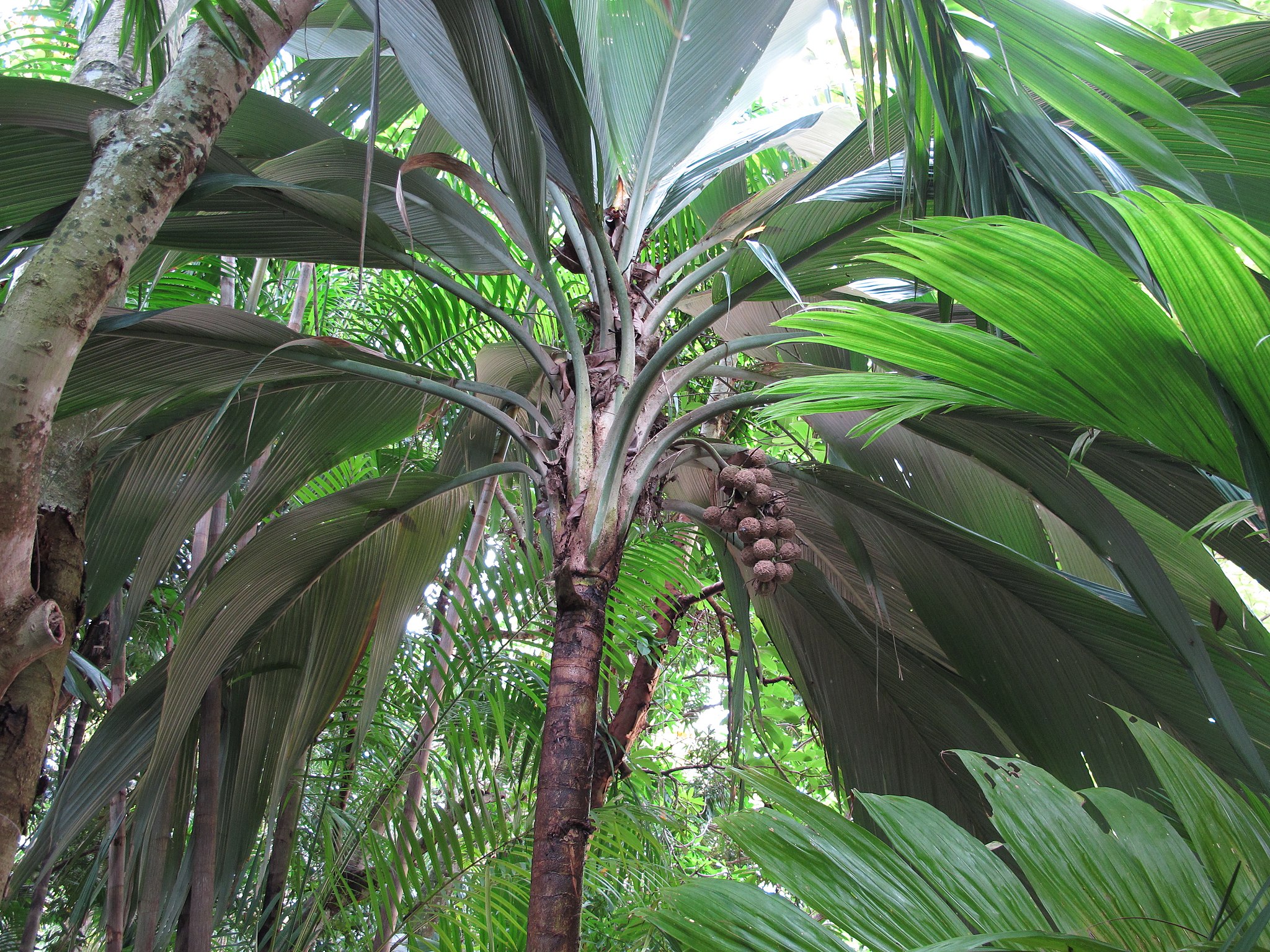
Pelagodoxa henryana
The Marquesas have 320 native vascular plant species with 42% endemism, including two endemic genera. The high levels of endemism exhibited in the Marquesas stem from the archipelago’s extreme isolation and the radiation of those taxa that were able to colonize across the oceans. Many plant genera, such as Asplenium, Psychotria, Bidens, Cyrtandra, Peperomia, Myrsine, Cyperus, and Melicope have numerous endemic species that evolved in the Marquesas from single ancestral species. The endemic palm, Pelagodoxa henryana, is the only species in this genera that is restricted to the islands.

Nukuhiva pigeon. Image credit: Samuel Etienne, Creative Commons
As in other remote oceanic islands in the Pacific, there is a rich fauna of land and freshwater snails—there are at least 78 species of land snails, most unique to the islands—as well as fruit flies. The Marquesan snout butterfly is restricted to the islands. The Marquesas has 19 breeding seabird species and 11 land birds. The spectacular, but highly endangered, ultramarine lory once occurred throughout the archipelago.
Other residents include the Nuku Hiva pigeon, Marquesas ground-dove, Marquesas kingfisher, Fatuhiva monarch, Iphis monarch, and Marquesas monarch; the red-mustached fruit-dove is extinct. Excavations on Ua Huka provide evidence that the island once supported 7 more seabird species and 13 land birds that are now missing, including 10 endemic rails, pigeons, and parrots.
Lowland forests have been largely cleared and are now dominated by introduced species. Introduced goats, sheep, horses, cattle, pigs, cats, dogs, ants, and rats have wreaked havoc on the native species. Centipedes and lizards, most likely introduced accidentally, harm native invertebrates. Introduced mynahs and great horned owls compete with native bird populations for habitats and resources. Fires regularly set by humans degrade upland natural habitats. Logging, Caribbean pine plantations, and the introduced Leucaena leucocephala further replace native forests.
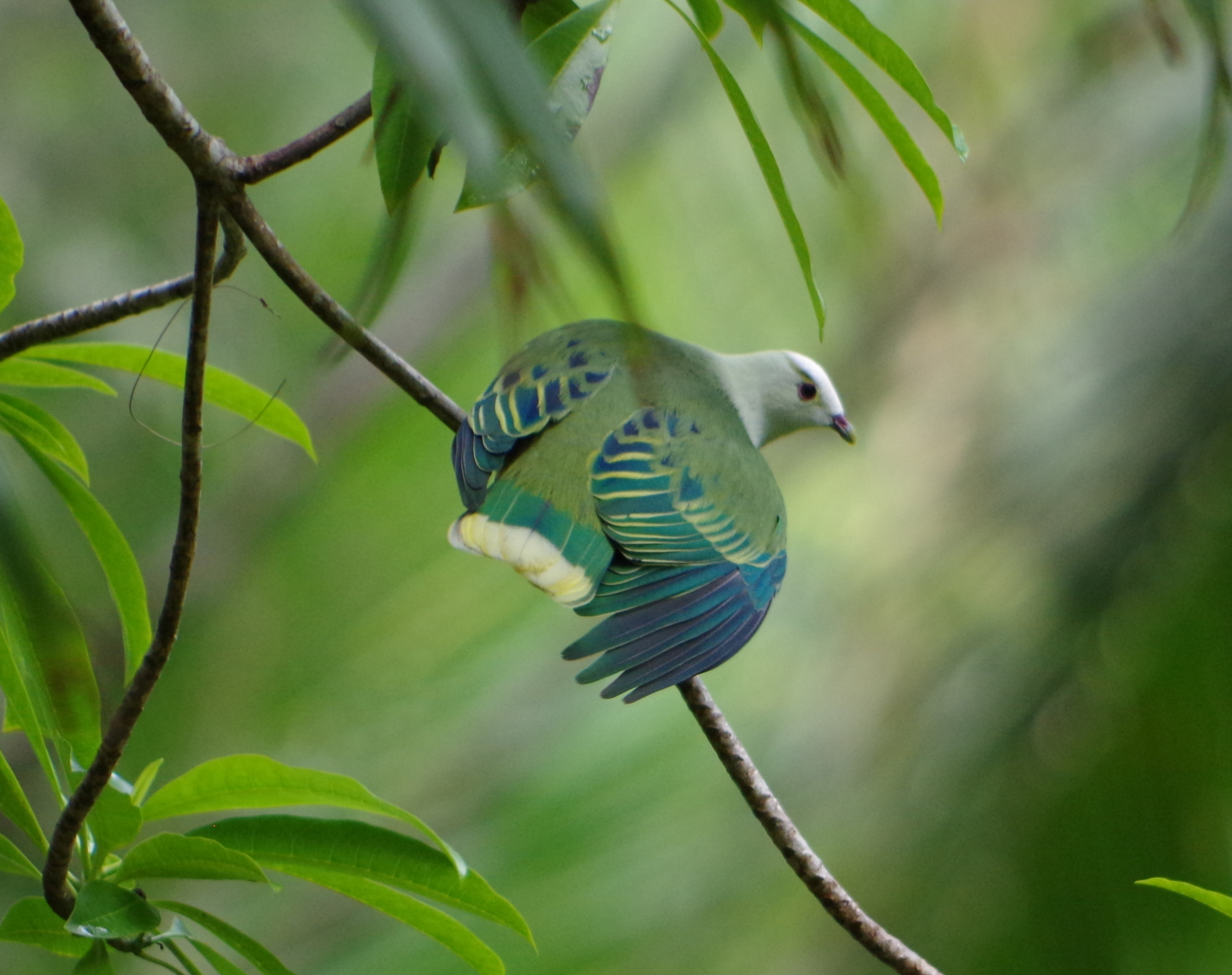
White-capped fruit dove. Image credit: Céline Labaume, Creative Commons
Conservation of Marquesan native habitats and biotas must be accompanied by major control efforts for alien species and fire, as well as habitat restoration efforts. Presently, there are a few smaller islets that are protected and efforts to eradicate introduced species are underway on at least twelve.
The priority conservation actions in the next decade are to: 1) strengthen the protection and management of upper-elevation forests on Ua Pou, Nuku Hiva, Fatu Hika, Ua Huku, and Fatu Hiva, both in government or community-managed reserves; 2) support efforts to eradicate rats, cats, and goats from smaller islands that still retain populations of sea and land birds, as well as native habitat; and 3) implement fencing of populations of several highly endangered plant species and habitats (several ravines and upland swamps) to keep out grazing and rooting introduced animals, coupled with intensive rat control.
Citations
- Adamson AM. 1935. Affinities and origins of the fauna of the Marquesas Islands. PhD dissertation University of California, Berkeley. 205 pp.
- *CEPF. 2007. Ecosystem Profile: Polynesia/Micronesia Biodiversity Hotspot. Critical Ecosystem Partnership Fund, Washington, DC.
- Cowie RH. 1992. Evolution and extinction of Partulidae, endemic Pacific island land snails. Philosophical Transactions of the Royal Society of London Biological Sciences 335:167-191.
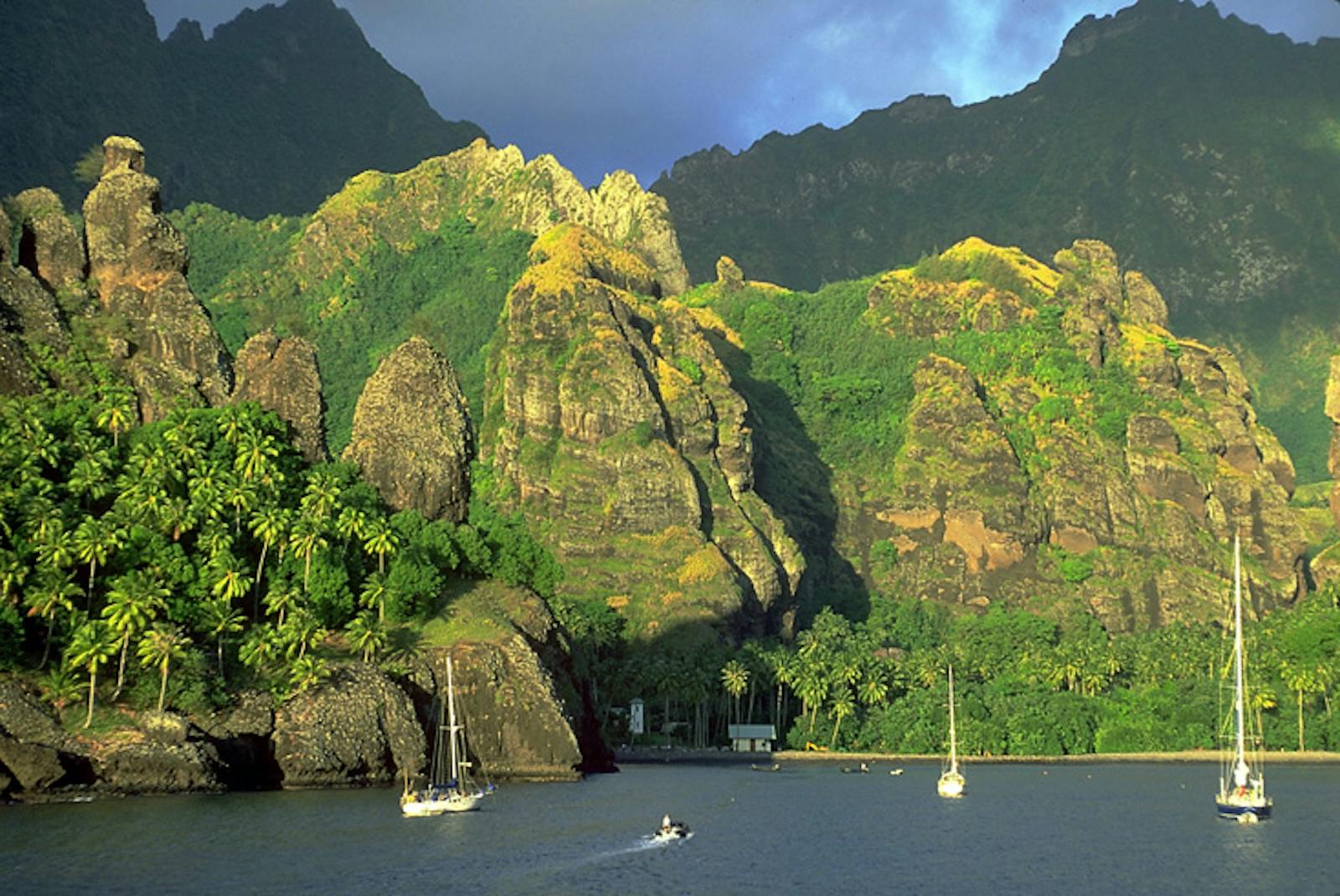
-CC-Steve%20Berardi-2009_resized.jpg?auto=compress%2Cformat&w=1600)
